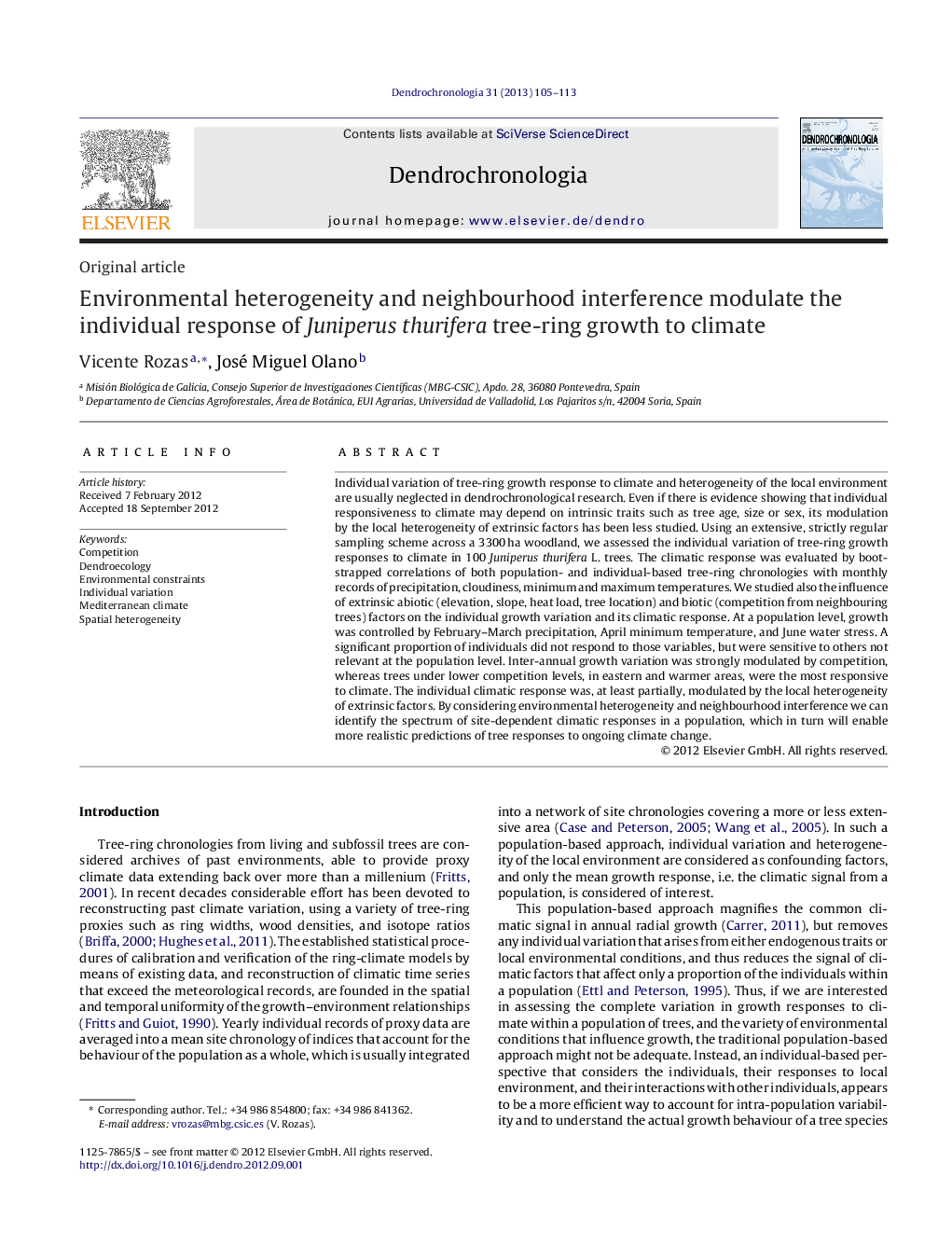| Article ID | Journal | Published Year | Pages | File Type |
|---|---|---|---|---|
| 85638 | Dendrochronologia | 2013 | 9 Pages |
Individual variation of tree-ring growth response to climate and heterogeneity of the local environment are usually neglected in dendrochronological research. Even if there is evidence showing that individual responsiveness to climate may depend on intrinsic traits such as tree age, size or sex, its modulation by the local heterogeneity of extrinsic factors has been less studied. Using an extensive, strictly regular sampling scheme across a 3300 ha woodland, we assessed the individual variation of tree-ring growth responses to climate in 100 Juniperus thurifera L. trees. The climatic response was evaluated by bootstrapped correlations of both population- and individual-based tree-ring chronologies with monthly records of precipitation, cloudiness, minimum and maximum temperatures. We studied also the influence of extrinsic abiotic (elevation, slope, heat load, tree location) and biotic (competition from neighbouring trees) factors on the individual growth variation and its climatic response. At a population level, growth was controlled by February–March precipitation, April minimum temperature, and June water stress. A significant proportion of individuals did not respond to those variables, but were sensitive to others not relevant at the population level. Inter-annual growth variation was strongly modulated by competition, whereas trees under lower competition levels, in eastern and warmer areas, were the most responsive to climate. The individual climatic response was, at least partially, modulated by the local heterogeneity of extrinsic factors. By considering environmental heterogeneity and neighbourhood interference we can identify the spectrum of site-dependent climatic responses in a population, which in turn will enable more realistic predictions of tree responses to ongoing climate change.
